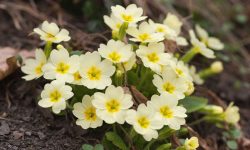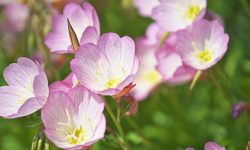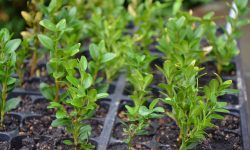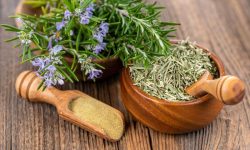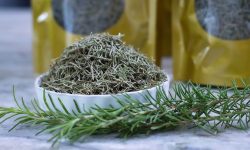Chrysanthemums, commonly known as mums, are cherished autumn staples in gardens and porches across the United States. Their vivid, bold blooms arrive just as summer flowers begin to fade, providing a burst of seasonal color that symbolizes the richness of fall. Mums are a favorite among gardeners not only for their beauty but also for the sense of renewal and transition they bring to outdoor spaces.
Despite their popularity, mums are not as low-maintenance as they often appear. Keeping these plants vibrant throughout the fall—and even encouraging them to return the following year—requires more than basic watering and sunlight. With thoughtful care tailored to their growing conditions, whether in pots or in the ground, mums can thrive and bloom longer. This guide offers expert insights and proven techniques to help you keep your mums alive, healthy, and bursting with color all season long.
Understanding the Life Cycle of Mums
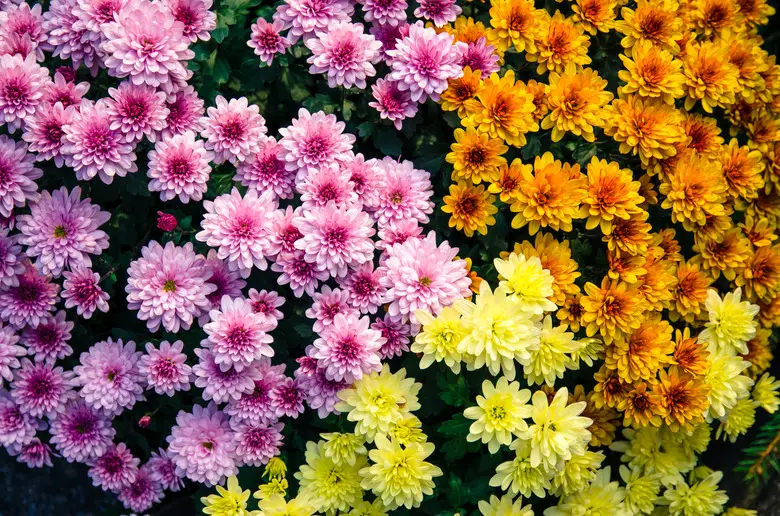
Perennial or Annual? Knowing What You’re Growing
One of the first steps to keeping mums alive is identifying whether you’re growing a true hardy perennial variety or a florist mum typically treated as an annual. Garden mums, or hardy mums, are bred to survive winter in USDA zones 5 through 9 with proper care. They develop robust root systems when planted early in the season, allowing them to return year after year. In contrast, florist mums are cultivated for visual impact and short-term display. These are best enjoyed during one blooming cycle and are unlikely to survive winter outdoors.
Growth Stages and Seasonal Timing
Mums undergo several distinct phases throughout the year, from initial vegetative growth in spring and summer to the flowering phase in fall. Recognizing these stages is vital for applying the right care at the right time. In spring, energy is directed into roots and foliage. By mid to late summer, buds begin to form. During fall, energy shifts toward bloom production. Once frost hits, growth halts, and the plant begins dormancy.
Choosing the Right Environment for Long-Term Survival
Sunlight and Airflow Requirements
Mums thrive in full sun, requiring at least six hours of direct sunlight daily to produce compact growth and numerous blooms. Insufficient light leads to leggy stems and fewer flowers. Besides light, airflow is crucial. Planting mums in areas with good circulation helps prevent fungal infections, such as powdery mildew and botrytis, which can damage both foliage and blossoms.
Soil Conditions and Drainage
Well-draining soil is critical for healthy root development. Mums cannot tolerate waterlogged conditions, which lead to root rot and stunted growth. Amending garden beds with compost and sand enhances drainage and provides nutrients essential for sustained flowering. In containers, use a high-quality potting mix with added perlite or vermiculite for aeration.
Watering Mums Properly for Maximum Longevity
How Often to Water and Why Consistency Matters
Inconsistent watering is a common reason mums fail to thrive. During dry spells or hot days, mums require daily watering, especially in containers where soil dries out faster. However, overly frequent watering without allowing the soil to drain properly can suffocate roots. The key is to maintain even moisture, allowing the top inch of soil to dry slightly before rewatering. Early morning is the best time to water, reducing evaporation and preventing disease spread through damp foliage overnight.
Recognizing Signs of Overwatering or Underwatering
Yellowing lower leaves, mushy stems, and blackened roots indicate overwatering. In contrast, wilting and dry, crispy leaves are symptoms of underwatering. Observing the soil texture and plant response helps adjust watering frequency before stress damages the plant irreversibly.
Fertilizing Mums to Support Growth and Blooms
Timing and Types of Fertilizer
Feeding mums encourages lush foliage and a longer blooming season. Begin fertilizing in early spring with a balanced fertilizer high in nitrogen to support leafy growth. By mid-summer, switch to a bloom-boosting fertilizer higher in phosphorus and potassium to enhance flower production. Stop fertilizing in early fall, as the plant shifts its energy from growth to blooming and, eventually, dormancy.
Application Techniques for Best Results
Always water the plant before applying fertilizer to avoid burning the roots. Apply granular fertilizer around the drip line of the plant or use diluted liquid fertilizer at the base. Avoid getting fertilizer on the leaves or blooms, as this may cause spotting or discoloration.
Deadheading and Pruning Techniques
Why Deadheading Prolongs Blooming
Deadheading, or removing spent flowers, redirects the plant’s energy from seed production back into new blooms. Regularly removing faded blooms encourages continuous flowering well into the season. It also improves the plant’s overall appearance, keeping it tidy and fresh.
Pinching and Seasonal Pruning
Pinching back mums early in the growing season, especially from May to early July, helps produce bushier, more compact plants with a higher number of flower buds. Each time you pinch back a stem, the plant produces side shoots, increasing the potential bloom sites. Stop pinching by mid-July to allow flower buds to develop in time for fall. In late fall, after blooming ends, prune the plant back to 4–6 inches above the ground to prepare it for winter.
How to Overwinter Mums Successfully
Preparing Mums for Winter Dormancy
To overwinter mums successfully, especially in colder regions, begin by allowing the foliage to die back naturally. This process helps insulate the crown of the plant and signals the beginning of dormancy. After the first hard frost, apply a thick layer of mulch—straw, shredded leaves, or evergreen boughs—over the base of the plant to protect it from freezing temperatures.
Bringing Container Mums Indoors
For mums grown in pots, consider moving them into a sheltered location like a basement, garage, or unheated sunroom once night temperatures drop below freezing. Keep the soil slightly moist through winter without overwatering. Reduce light exposure and avoid fertilizing until early spring.
Troubleshooting Common Mum Problems
Pests That Affect Mum Health
Aphids, spider mites, and thrips are common pests that feed on mums. They damage leaves and flowers by sucking sap, leading to distorted growth and reduced bloom quality. Use insecticidal soap or neem oil sprays as a preventive measure, especially in warm, humid conditions.
Preventing and Treating Fungal Diseases
Fungal diseases such as leaf spot, botrytis, and powdery mildew can rapidly spread in overly humid or crowded environments. Avoid overhead watering, space plants appropriately, and prune overcrowded growth to maintain airflow. At the first sign of disease, remove affected foliage and apply a fungicide labeled for ornamental plants.
Encouraging Reblooms and Extended Display
Cutting Back After First Bloom
In mild climates or with early-season mums, it’s possible to get a second flush of flowers by trimming back the plant after its first round of blooms. Cut back spent stems to just above healthy leaves and resume a regular watering and feeding schedule. While not all varieties will rebloom, some can offer a bonus display if environmental conditions cooperate.
Rotating Display Plants for Continuous Color
For decorative arrangements, consider rotating different pots of mums into prominent spots as others fade. This technique is especially useful for container gardening or porch displays, ensuring continuous visual interest without relying on a single plant to last the entire season.
Companion Planting and Landscaping with Mums
Using Mums in Garden Design
Mums pair beautifully with other fall favorites such as ornamental grasses, asters, and pansies. Integrating mums into mixed beds or borders helps create a cohesive autumn display and provides structural balance. Select color combinations based on your home’s exterior or surrounding landscape features for maximum impact.
Avoiding Crowding and Competition
When planting mums in garden beds, avoid placing them too close to aggressive neighboring plants. Crowding can lead to poor air circulation, increased risk of disease, and competition for nutrients. Giving mums adequate space ensures each plant gets the light and airflow it needs to thrive.
Encouraging Year-Round Mum Health
Spring and Summer Care
If your mums survived winter, spring is the time to begin nurturing them back to health. Remove mulch in early spring, check for signs of new growth, and prune away any dead material. Begin fertilizing once new leaves emerge and start a pinching schedule to promote bushier growth. Monitor for pests and diseases as temperatures rise.
Dividing Overgrown Plants
After two or three seasons, mums can become crowded and woody. Dividing the clumps in spring not only rejuvenates older plants but also provides you with new plants to expand your garden. Use a sharp spade to separate healthy root sections, then replant immediately in fresh soil.
Frequently Asked Questions (FAQ)
How often should I water mums in containers versus garden beds?
Container mums typically require daily watering during warm weather because potting soil dries out faster than garden soil. In contrast, garden mums may only need watering every 2–3 days, depending on rainfall and temperature. To avoid overwatering, always check the top 1–2 inches of soil for dryness before watering.
What is the ideal soil pH for mums to thrive?
Chrysanthemums grow best in slightly acidic to neutral soils with a pH range between 6.2 and 6.7. Soil that’s too acidic or alkaline can limit nutrient uptake. Use a soil test kit to determine pH, and amend with lime to raise pH or sulfur to lower it if necessary.
What type of fertilizer is best for promoting blooms?
For healthy blooms, use a water-soluble or slow-release fertilizer with a balanced NPK ratio such as 10-10-10 in spring. Switch to a phosphorus-rich formula like 5-10-5 or 4-10-6 in late summer to support bud development and flower production. Avoid high-nitrogen formulas in late summer, as they encourage foliage at the expense of blooms.
When should I stop fertilizing mums before winter?
Stop all fertilization about 6 to 8 weeks before the first expected frost in your region. Continuing to fertilize late into the fall can stimulate new tender growth that is susceptible to frost damage and interferes with natural dormancy.
Can I keep mums alive indoors during winter?
Yes, mums grown in containers can be overwintered indoors in a cool, dark place such as a basement or unheated garage. Keep temperatures between 35–50°F and water sparingly—just enough to prevent the roots from drying out completely. Resume active care in early spring when new growth appears.
Why are my mums getting leggy with fewer blooms?
Leggy growth with sparse flowering usually results from insufficient light or a lack of pinching during the growing season. Ensure your mums receive at least 6 hours of direct sunlight per day. In spring and early summer, pinch the tips of growing stems every 2–3 weeks until mid-July to encourage bushier growth and more flower buds.
How do I divide mums and how often should I do it?
Divide mums every 2 to 3 years in early spring when new shoots emerge. Use a sharp spade or garden fork to lift the entire clump, then separate the outer vigorous sections from the woody center. Replant divisions immediately in well-amended soil, spacing them 18–24 inches apart.
What causes buds to form but not open?
This condition, known as “bud blast,” can be caused by sudden environmental stress such as temperature fluctuations, drought, over-fertilization, or pest infestations. Ensure consistent watering, avoid overfeeding, and inspect regularly for insects like thrips that feed on developing buds.
Can I plant mums in fall and expect them to survive winter?
Fall-planted mums typically don’t have enough time to establish deep roots before winter arrives. For perennial survival, plant hardy garden mums in early spring or no later than midsummer. If fall planting is unavoidable, choose hardy cultivars and provide heavy mulching after the first frost to protect the crown.
What are the signs of root rot in mums?
Common signs of root rot include wilted or yellowing leaves, mushy or black roots, foul odor from the soil, and stem collapse near the base. Root rot is most often caused by poor drainage or excessive watering. Always use well-drained soil and avoid letting containers sit in standing water.
Conclusion
Keeping mums alive and blooming beautifully through the fall and beyond is entirely possible with the right care and timing. From understanding their life cycle and soil needs to mastering pruning, watering, and overwintering, each step plays a crucial role in plant vitality. Whether you’re growing in containers or garden beds, these expert tips ensure your mums remain a thriving focal point of your seasonal garden. With a little attention and love, your mums can bring bright, healthy blooms not just this fall—but for many seasons to come.

